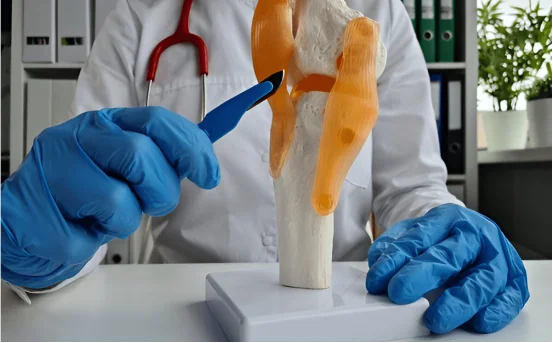Ectopic Pregnancy is when an egg fertilized implants outside of the uterus. This most commonly occurs in the fallopian tubes. If not treated immediately, this condition can be life-threatening as the growing embryo may cause internal bleeding or damage to reproductive organs. According to the World Health Organization (WHO), ectopic pregnancy accounts for 1-2% of pregnancies worldwide. Understanding of types of ectopic pregnancy surgery.
Ectopic Pregnancy requires immediate medical intervention. This is often done through medication or surgery. This article discusses the types and treatment options for ectopic pregnancies as well as associated risks.
Why surgery is needed for Ectopic Pregnancy
Not all ectopic pregnancy requires surgery. However, when:
- The fallopian tubes has ruptured
- Internal bleeding
- Medication (like methotrexate) fails
- The patient is in unstable condition
The need for a surgical treatment is critical.
Surgery can help to prevent serious complications and preserve fertility in the future.
Types of Ectopic Pregnancy Surgery
Ectopic pregnancy surgery can be divided into two broad categories.
- Laparoscopic Surgery
- Laparotomy (Open Surgery)
Explore each one in detail.
Laparoscopic Surgery to Remove Ectopic Pregnancy
Laparoscopy has become the preferred method of managing ectopic pregnancies, particularly if they are diagnosed early and if the patient is stable.
Salpingostomy
- This procedure involves a surgeon making a small cut in the fallopian tubes to remove the ectopic tissues.
- The tube is preserved, and it’s allowed to heal by itself.
Best for: small, unruptured pregnancies
Benefits
- Preserves fallopian tube
- Recovery time is shorter
- Lower complication rates
Risks: - Possible residual ectopic tissue
- There is a slight risk of recurrence within the same tube
Salpingectomy
- The fallopian tubes must be completely removed.
- The tube must be severely damaged or ruptured before this procedure can be performed.
Advantages
- Eliminates the risk of recurrence within the same tube
- Reduces internal bleeding
risks - Reduced fertility when the other tube is compromised
The Procedure Overview
- Performed under general anesthesia
- On the abdomen, small incisions are made (usually 3).
- The surgeon is guided by a laparoscope, a thin tube with specialized cameras.
Recovery time : 1-2 weeks
Hospital stay : usually same day or overnight stay
Laparotomy in Ectopic Pregnancy
Laparotomy, a traditional Open Surgery technique is used when:
- Internal bleeding
- Large ectopic masses
- An unstable patient condition
- Previous unsuccessful laparoscopic surgeries
What happens during laparotomy?
- The lower abdomen is incised in a large way
- The surgeon repairs or removes damaged fallopian tubes and removes ectopic pregnancies.
Best For:
- Emergency Cases
- Ectopic pregnancy in the late stages
- Complications of the abdominal cavity
Advantages:
- Better access to and control of bleeding
- Ideal for complex cases
Disadvantages:
- Recovery time is longer
- Visible scar
- Risk of infection
Recovery Time: 4-6 weeks
Hospital Stay: 3-5 days depending on patient condition
After-Surgery Recovery & Care
Physical Recovery
- Avoid heavy lifting or strenuous activity for at least 6 weeks after laparotomy.
- Keep your incisions dry and clean
- Pain relief with prescription medication
Emotional Recovery
- Loss of pregnancy is emotionally distressing
- Support groups or counseling may be helpful
- It is recommended that you seek medical advice for future pregnancies.
Ectopic Pregnancy Surgery: Risks and Complications
As with any surgery, there are risks associated with ectopic pregnancy surgery.
- Infection
- Bleeding
- Damage of surrounding organs (e.g. bowel, bladder).
- Adhesions and scar tissue
- Tubes damaged or removed may reduce fertility
- Psychological impact
Complications can be reduced by prompt follow-up after surgery and timely post-operative care.
Future Fertility After Surgery
Fertility results Depend on:
- Condition of the remaining fallopian tubes
- The extent of the surgical damage
- Age and reproductive health
Guidelines:
- Doctors recommend waiting for at least two menstrual cycles to try again.
- Natural conception is possible if one of the fallopian tubes is intact
- In cases of bilateral tubal injury, IVF (In vitro fertilization) can be considered.
When to Consult a Doctor
After surgery, contact your doctor immediately if you experience:
- Constant or worsening abdominal discomfort
- Fever or chills
- Heavy vaginal bleeding
- Incisions may be accompanied by redness or discharge.
Conclusion
Ectopic pregnancy can be a medical emergency requiring immediate diagnosis and treatment. Laparoscopy, laparotomy and salpingostomy are effective surgical options based on a patient’s condition.
Successful recovery and future pregnancies can be achieved with the right care and guidance. Consult a qualified gynecologist for personalized treatment.























